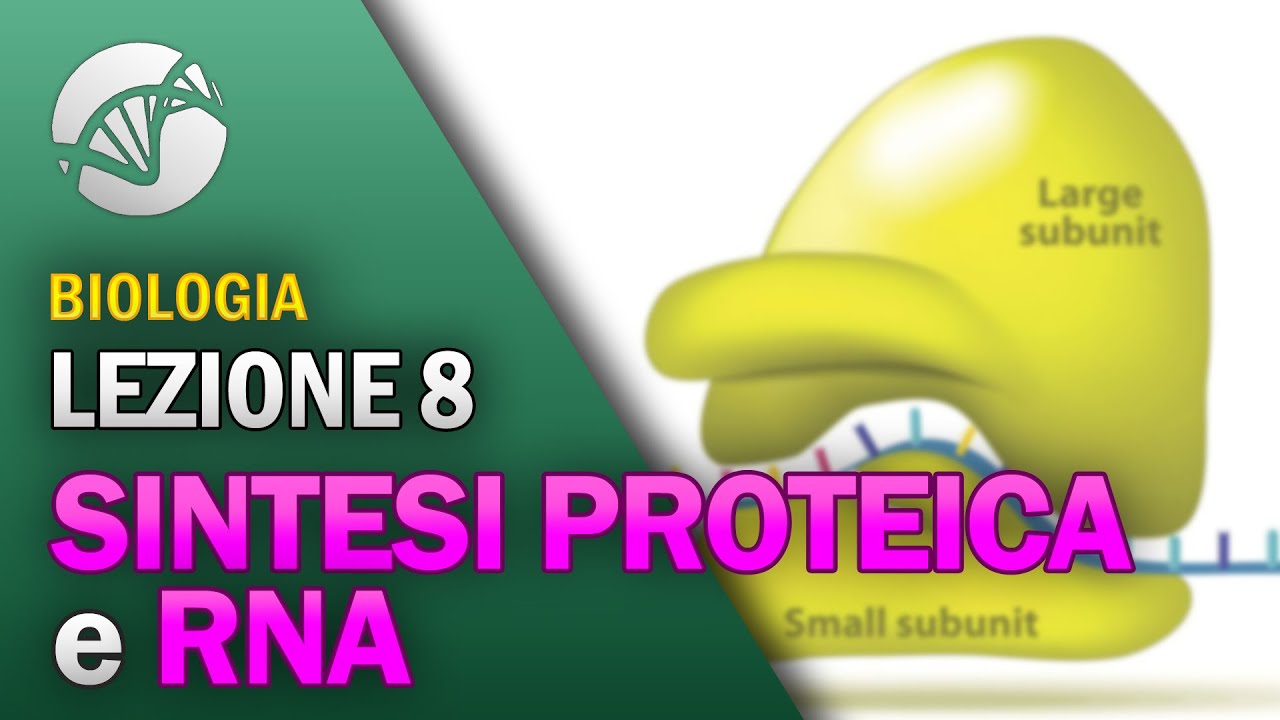Transkription
Summary
TLDRThe video explains the role of DNA in protein synthesis, focusing on the transcription process, where information in DNA is copied into mRNA. It begins by describing proteins as large molecules made of amino acids and how genes in DNA code for specific proteins. The transcription process is then broken down step by step, showing how RNA polymerase synthesizes RNA by pairing DNA bases with complementary RNA nucleotides. The video also introduces key concepts like base pairing and ends with a preview of mRNA maturation and protein translation, which will be discussed in future segments.
Takeaways
- 🧬 DNA carries the 'recipe' for proteins, which are synthesized through a process called transcription.
- 🧑🏫 Proteins consist of long chains of amino acids, often described as being 'like beads on a string.'
- 🔬 There are 20 amino acids in proteins, with at least 2 more found in some organisms.
- ⚙️ Transcription is the process where the information in DNA is rewritten into RNA.
- 🧪 A specific segment of DNA that codes for a protein is called a gene.
- 🛠️ RNA polymerase is the enzyme responsible for synthesizing RNA by opening the DNA strand and creating a transcription bubble.
- 📏 In RNA, the base thymine (T) in DNA is replaced by uracil (U) when base pairing occurs.
- ⚡ During transcription, nucleotides in the cell pair with complementary bases in the DNA to form a growing RNA strand.
- 🔗 DNA's bases pair as follows: A with U, T with A, C with G, and G with C in RNA.
- 📜 The next steps after transcription are mRNA maturation and the translation of RNA into proteins, which will be covered in subsequent lessons.
Q & A
What is one of the main functions of a DNA molecule?
-One of the main functions of a DNA molecule is to carry the 'recipe' for proteins.
What is proteinsynthesis and what are its main stages?
-Proteinsynthesis is the process of creating proteins from the instructions in DNA. The main stages include transcription, where DNA is transcribed to mRNA, and translation, where mRNA is used to build proteins.
What is the role of RNA polymerase in transcription?
-RNA polymerase is the enzyme responsible for synthesizing RNA by opening up the DNA molecule and helping to form an RNA strand by matching nucleotides to the DNA template.
Why are proteins referred to as 'macromolecules'?
-Proteins are referred to as macromolecules because they are large molecules made up of long chains of amino acids.
What are the building blocks of proteins?
-Proteins are made up of long chains of amino acids, which are linked together like 'beads on a string.'
How many amino acids are involved in protein synthesis across all living organisms?
-There are 20 amino acids involved in the proteins of all living organisms, with at least two more that exist in a few species.
What is the relationship between a gene and a protein?
-A gene is a section of DNA that contains the 'recipe' or code for making a specific protein.
What happens during transcription?
-During transcription, the information stored in a DNA molecule is rewritten into an RNA molecule. This involves RNA polymerase creating a complementary RNA strand based on the sequence of bases in the DNA.
What base replaces thymine (T) in RNA molecules?
-In RNA molecules, uracil (U) replaces thymine (T).
What happens after transcription in the process of protein synthesis?
-After transcription, the mRNA molecule matures and is then translated into a protein in the next stages of protein synthesis.
Outlines

Этот раздел доступен только подписчикам платных тарифов. Пожалуйста, перейдите на платный тариф для доступа.
Перейти на платный тарифMindmap

Этот раздел доступен только подписчикам платных тарифов. Пожалуйста, перейдите на платный тариф для доступа.
Перейти на платный тарифKeywords

Этот раздел доступен только подписчикам платных тарифов. Пожалуйста, перейдите на платный тариф для доступа.
Перейти на платный тарифHighlights

Этот раздел доступен только подписчикам платных тарифов. Пожалуйста, перейдите на платный тариф для доступа.
Перейти на платный тарифTranscripts

Этот раздел доступен только подписчикам платных тарифов. Пожалуйста, перейдите на платный тариф для доступа.
Перейти на платный тариф5.0 / 5 (0 votes)






